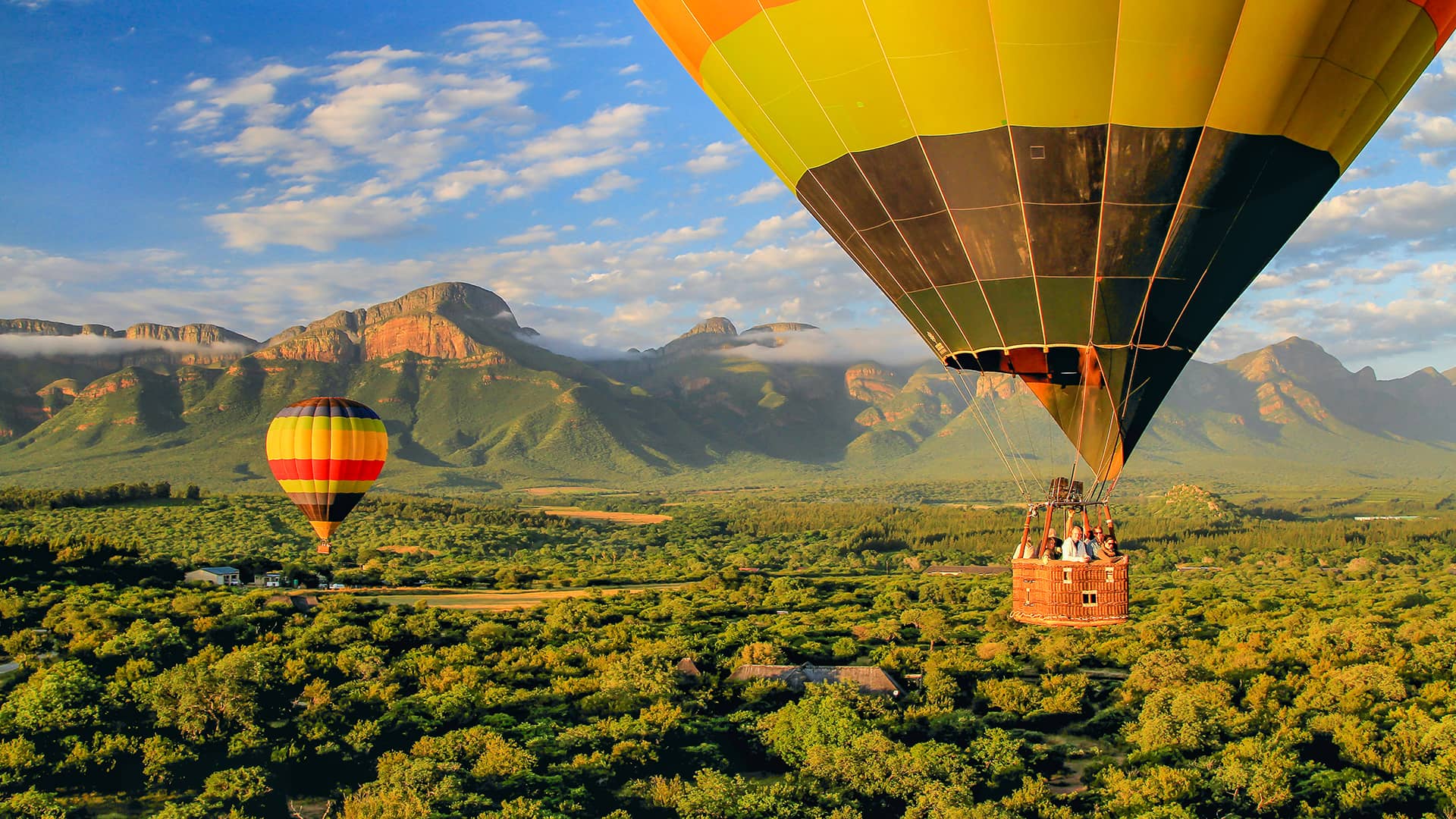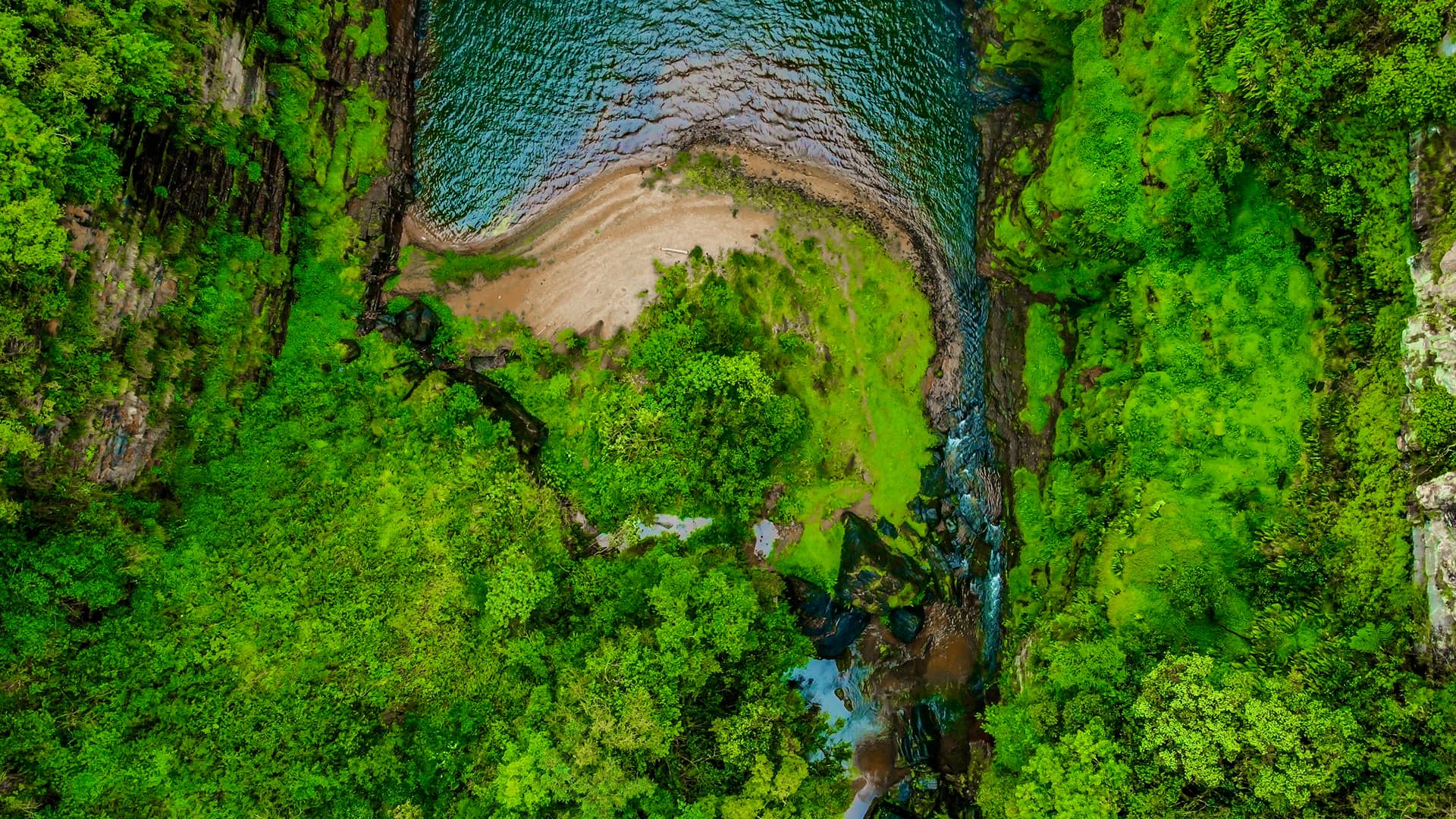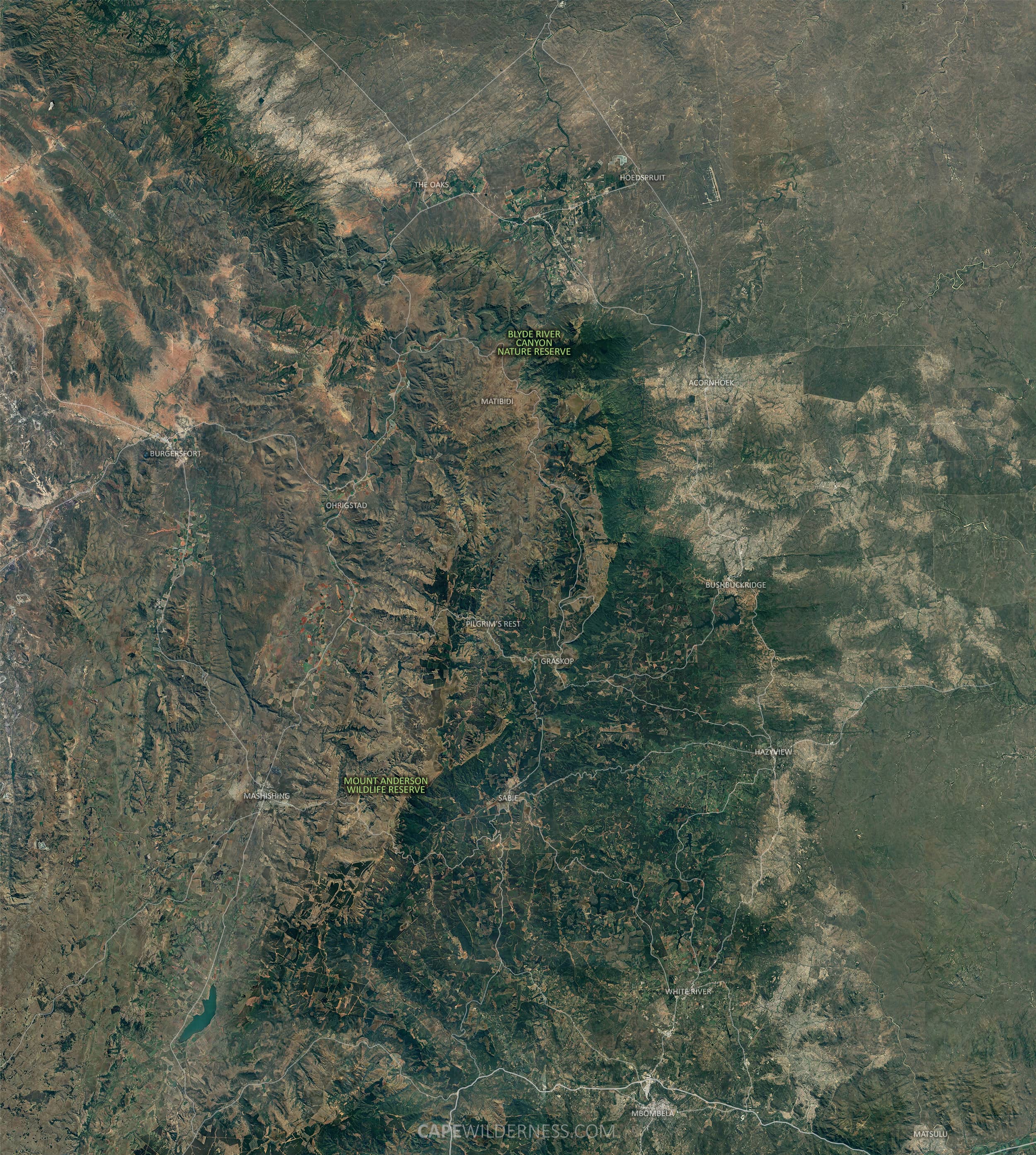Where the escarpment meets the sky: the majesty of the world's largest green canyon
Panorama Route
Located on the edge of the Great Escarpment, the Panorama Route is a lush, mountainous terrain scarred with spectacular ochre cliffs. This region is often visited by tourists who are on their way to the Kruger National Park and the many game reserves of the Greater Kruger. But, the Panorama Route is much more than just a stopover.


The region has many natural wonders, but the most famous one is the Blyde River Canyon. The canyon is 26km long, some 800m deep and for the most part covered in vegetation. This makes it the largest green canyon and one of the largest canyons (overall) in the world. Besides the canyon itself, the view on the Three Rondavels is spectacular.
In some places, you can really see the abrupt and dramatic halt of the Highveld plateau, falling steeply away into the Lowveld. This provides some incredible views like God’s Window and spectacular rock formations like the Pinnacle Rock. Much of the vegetation of the region has been transformed to plantations, but sections of indigenous forest still remain, as do grasslands littered with proteas and Red Hot Pokers.
The Panorama Route is also home to many waterfalls. You could spend just one day on visiting all of them. Some of the more popular ones are Berlin Falls, Lisbon Falls and Lone Creek Falls. With all of these natural wonders crammed into this small region, it is easy to see why it is such a popular destination for tourists.


WHERE
IS THIS REGION
LOCATED
PARKS & RESERVES

Blyde River Canyon Nature Reserve
The Blyde River Canyon Nature Reserve is a popular tourist destination in South Africa. Within the reserve lies the third largest canyon in the world, however it is considered the largest green canyon in the world because of its subtropical vegetation. The entire nature reserve provides plenty of dramatic viewpoints. Together with Bourke’s Luck Potholes and a couple of spectacular hiking trails, this reserve is well-worth the visit.

Mount Anderson Wildlife Reserve
The Mount Anderson Wildlife & Water Catchment Reserve is located to the east of Lydenburg and is approximately 20.000ha in size. It supports a vast variety of rare and endangered animals as well as unique plant species. The upper grassland slopes are a sanctuary for many antelope species and the free roaming Leopard, Jackals and Brown Hyaena. The reserve offers game drives and guided walks, but there are also plenty hiking and walking trails from which to enjoy this spectacular scenery and breathtaking views.
FLORA & FAUNA
When you travel the Panorama Route, you will be surrounded by a lush, green and mountainous landscape. The region is located on the northern part of the Great Escarpment, which means there are many gorges, crack and steep cliffs where human activity cannot reach. This creates plenty of habitat for flora and fauna to thrive.


The game and nature reserves in the region are home to a good collection of wildlife. You can find mammals such as Black Wildebeest, Giraffe, Plains Zebra, Common Eland, Mountain Reedbuck, Grey Rhebok, Blesbuck, Steenbok and the endangered Oribi. If you are lucky, you might even spot Leopard, Jackals or Servals. This is also the place where you can find all five primate species that South Africa has to offer: Blue Monkey, Brown Greater Galago, Southern Lesser Galago, Vervet Monkey and Chacma Baboon.
The cliffs of the Panorama Route are very well suited for raptors. In the Mount Anderson Wildlife Reserve lives a breeding colony of the endangered Cape Griffon and the Blyde River Canyon is home to the rare Taita Falcon. But there is more to see here. Amongst others, you can find Cape White-Eye, Malachite Sunbird, Gurney’s Sugarbird, African Fish Eagle, Ground Woodpecker and many species of kingfisher.
The gorges of the mountain range are home to patches of indigenous forest where some beautiful specimens of trees can still be found. A good place to explore these forests is at Graskop Gorge. The gorge is home to an indigenous forest, easy to explore with a cliff walkway, a circular elevated walkway, a suspension bridge over the gorge and lift down to the bottom.
The Blyde River Canyon is another flora hotspot. It is one of the few montane grassland areas in Mpumalanga and consist of over 1000 flora species, including orchids, lilies, tree ferns and cycads. Many of these species are endemic, rare or endangered. Favorite flora species in the region include Common Grassveld Sugarbush, Silver Terminalia, Cape Holly, Common St. John’s Wort and the many wild orchid species.



